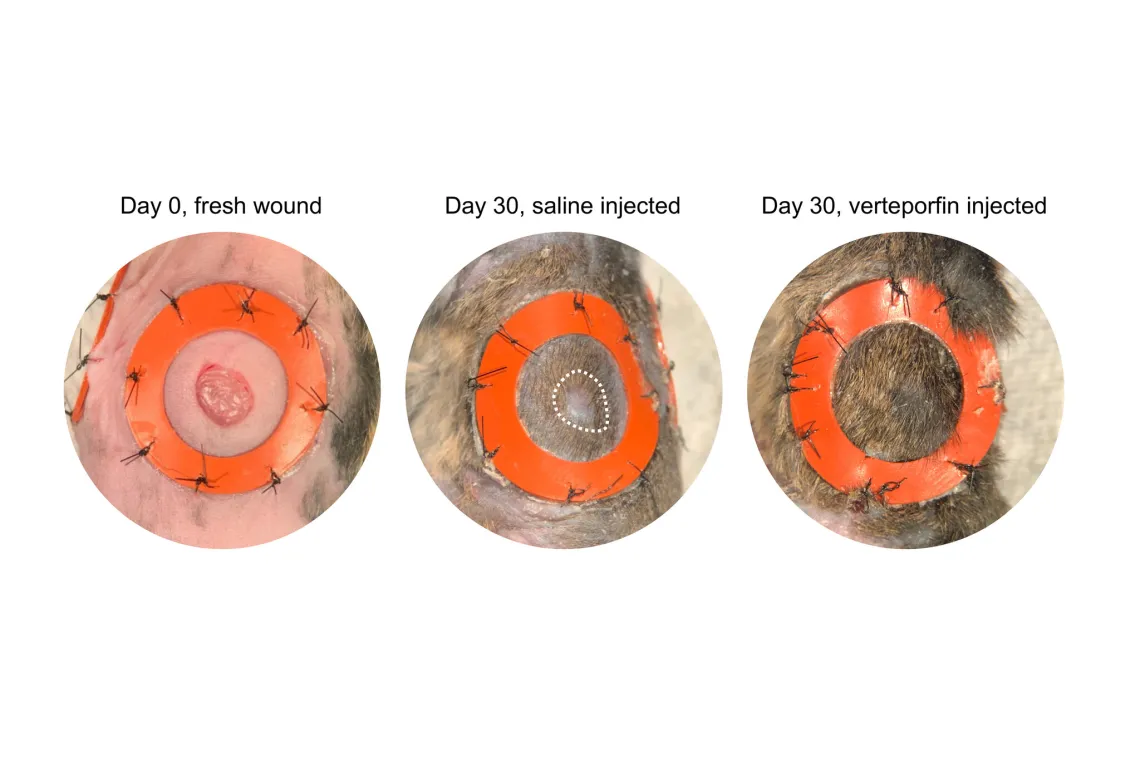Imagine, Surgery Without a Scar
A new study shows that a 20-year-old drug prevents scarring in mice. If it works on humans, it could change the lives of those with disfiguring wounds.

A test of verteporfin on wounds made on mice: The vertoporfin treated wound, right, showed no scarring after 30 days, compared with a mouse treated with saline, center.
Michael T. Longaker, Shamik Mascharak, Heather desJardins-Park and Michaell Davitt
Cleft palates that close without scars. Burn wounds that recover without a trace of injury. Years-old disfiguring scars that disappear, leaving skin smooth and flawless.
It sounds like science fiction, but healing without scarring may become a tantalizing possibility. In a study published Thursday in Science, two researchers at Stanford University report that they have figured out the molecular signals that make scars form and found a simple way to block them — at least in mice.
A 20-year-old drug, verteporfin, already on the market as an intravenous treatment for macular degeneration, can prevent scarring if it is injected at the edge of a wound.
As the verteporfin-treated wounds heal, the skin that forms looks perfectly normal, nothing like skin that heals with scars, those lumpy wound closures that are not only unsightly but also much weaker than normal skin and have no hair, or oil and sweat glands.
The study involved mice, but the researchers, Dr. Michael Longaker, Stanford’s vice chair of surgery, and Geoffrey Gurtner, Stanford’s vice president of surgery for innovation, have now moved on to pigs, whose skin is closest to that of humans. With these new subjects, the surgeons made an incision as wide as a thumb and five inches long. When they sutured the cut and injected verteporfin around the edge, there was dramatically less scarring.
